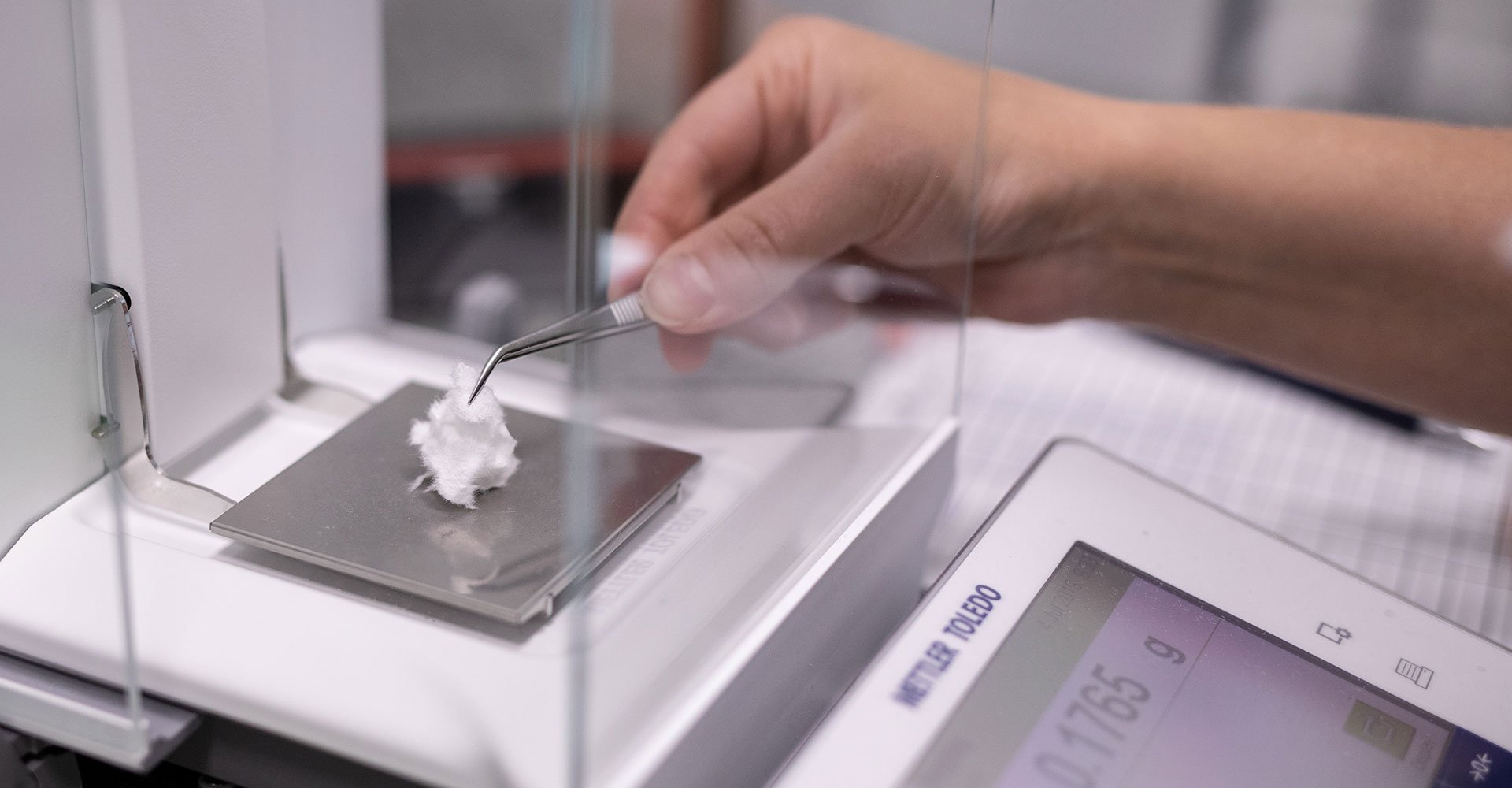Metsä Fibre’s fresh fibre pulp is pure and clean, meaning that it is ideal for use in products that come into contact with food. There are two absolute prerequisites here. First, nothing harmful to human health must be introduced to the food. Additionally, contact with the packaging materials must not alter the taste, smell or consistency of the food.
“We are constantly developing the indicators and methods that we use so that we can closely monitor the progress of the pulp process and react to any deviations immediately. All of our mills have their own laboratories, and they take samples of pulp and analyse these several times per day. Basic measurements are taken four or five times every hour,” explains Technical Service Manager Thomas Fant.
The pulp production process includes constant monitoring of factors such as brightness and waste content using an online analysis tool. Process supervisors also perform visual checks to ensure quality, and an external service provider carries out microbial analyses.
“For example, with birch pulp, certain extractive components are always measured in an external provider’s lab,” states Fant.
A second key tool used in monitoring is the FOX quality index. It monitors 15–20 key production parameters and will sound an alarm if any of the guideline values are exceeded.
Since 2012, Metsä Fibre has been attaching small RFID tags to the pulp they produce, which has significantly improved product traceability. These RFID tags help customers like paperboard or tissue paper mills to see for themselves the stage at which the pulp batch was produced. They can also check which batch of pulp was used to make a specific end product.
Identifying risks and reacting to them
For many years now, Metsä Fibre mills have been taking steps to identify potential production risk factors that could allow impurities and foreign matter into the pulp.
“For example, the debarking department and chip piles are such spots. Our operators constantly monitor the situation to ensure the process remains uncontaminated,” explains Fant.
The Health, Safety, Environment and Quality (HSEQ) system used at the mills allows employees to report deviations as and when they occur.
Ensuring that the correct amounts of the correct chemicals are used at the correct time also helps to eliminate risks – getting this right is a professional skill that underpins all Metsä Fibre’s operations.
“Thorough cleanliness is also important at the mill. For us, this means that we emphasise a ‘good housekeeping’ approach, following the Japanese 5S methodology. No foreign matter or contaminants are permitted in our process facilities, and every tool has its own, designated place.”

A strong, dependable safety chain
Safety plays an important role throughout Metsä Group . One of clear strengths is that the entire production process – from wood raw materials to final products – is in our own hands.
“We work in close collaboration throughout the group, which helps us ensure optimal product safety. When the whole chain runs smoothly, we can really focus on ensuring that we have consistent quality,” states Fant.
According to Fant, safety awareness will continue to grow among customers as the regulatory bar rises. Promoting a strong safety culture and technological innovations are key aspects of operational development.
"New technological solutions are being developed and implemented. For example, online analytics is continuously evolving, and artificial intelligence will undoubtedly bring many new solutions also to product safety work," Fant concludes.
